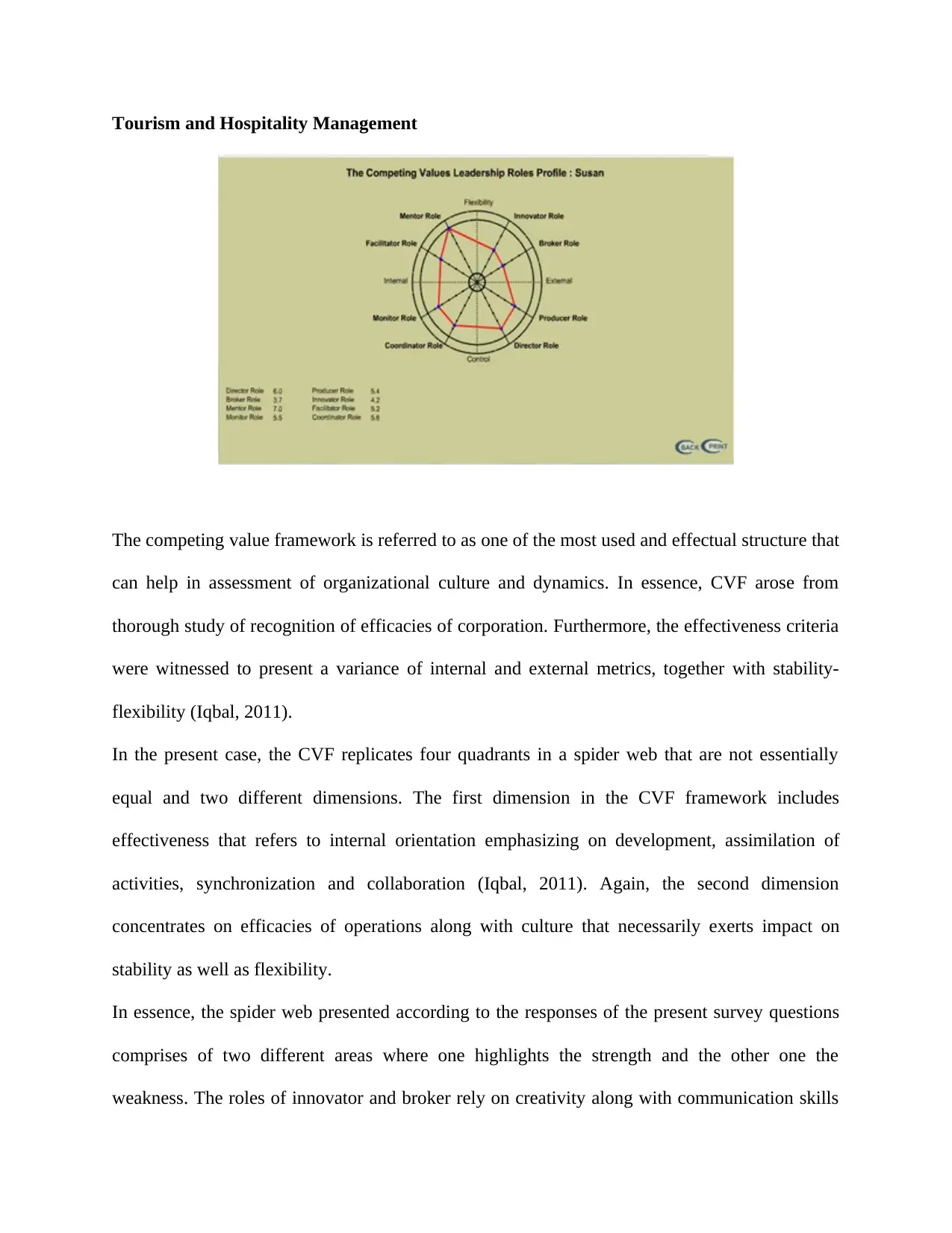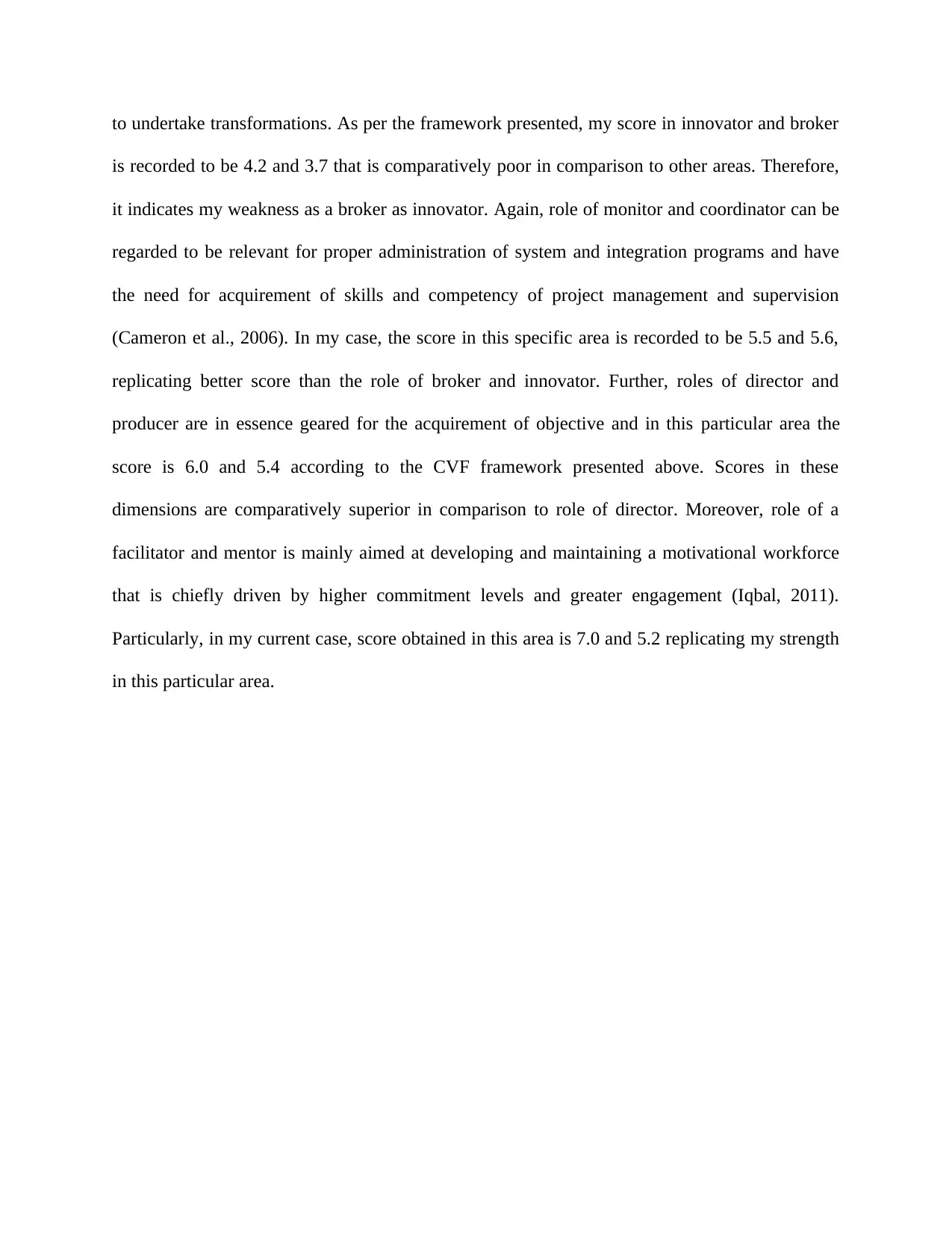CVF Analysis Report: Leadership, Management, and Hospitality
VerifiedAdded on 2021/04/24
|4
|498
|37
Report
AI Summary
This report provides a detailed analysis of leadership and management within the context of the tourism and hospitality industry, utilizing the Competing Values Framework (CVF). The analysis explores the strengths and weaknesses of different leadership roles, including innovator, broker, director, facilitator, and mentor. The report examines the scores obtained for each role, highlighting areas of proficiency and those needing improvement. The report also references the relevance of the roles of monitor and coordinator for project management and supervision. The report is based on the survey responses, which are used to assess the organizational culture and dynamics. The report also includes references to academic literature, such as Cameron et al. (2006) and Iqbal (2011), to support the findings and analysis. Overall, the report provides valuable insights into the application of the CVF in assessing leadership effectiveness and organizational culture within the hospitality sector.
1 out of 4











![[object Object]](/_next/static/media/star-bottom.7253800d.svg)